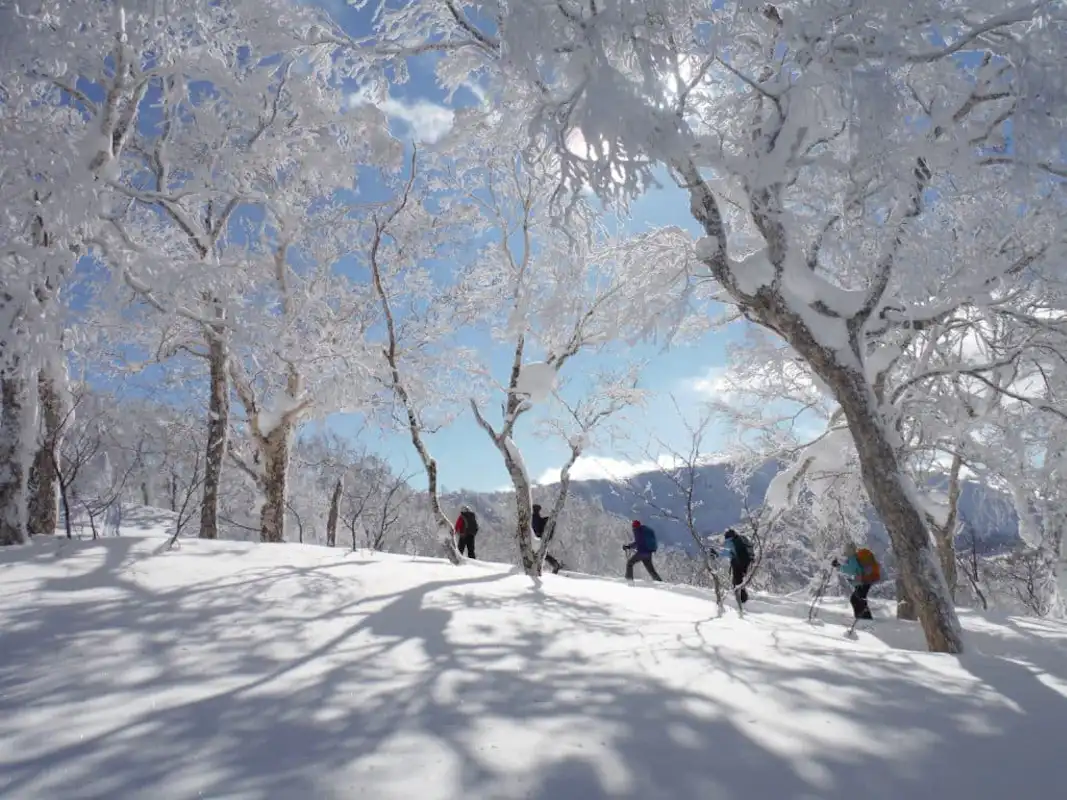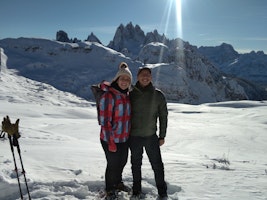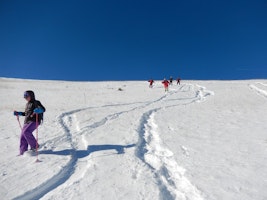Snowshoeing is a type of hiking that involves walking over snow with the assistance of footwear that displaces weight over a larger area. With origins roughly 4,000 to 6,000 years ago, this is the original snow sport – using the term “sport” loosely. Through the centuries it has played a vital role in remote mountain survival, with trappers and traders utilizing snowshoes to traverse the inaccessible regions of the wilderness.
The design of the snowshoe is to deter snow accumulation and allow for optimal maneuverability. Over time, the traditional wooden frames with latticed rawhide lacings have evolved to lightweight metals and plastics connected with synthetic fabrics. The toes of snowshoes are raised to increase mobility, which increases its athletic appeal.
The activity of snowshoeing is growing fast. It is a great hobby for those who like to explore snowy areas, and can often be combined with other activities like glacier hiking, skiing and snowboarding, mountaineering – and even trail running. From enthusiasts and novices to athletes and experts, this is a relatively easy sport to pick up, and requires no experience. Everyone who is able and willing to snowshoe can and should! It is a great way to hike through pristine powder snow.
Snowshoeing is a safe sport. Other than hidden obstacles, including ice, rocks, and roots, you are unlikely to come across many hazards or dangers. If you take your adventure into the backcountry, you should be prepared to navigate, and bringing a companion is always a good idea. Avalanches are also possible in more remote areas, while climbing and descending slopes can add potential challenges.

There are different types of snowshoes, depending on the level and difficulty. For first-timers, a generic hiking snowshoe is a great choice. As the intensity increases, more durable and sleek snowshoes become necessary for a seamless transition into sport- and expedition-level activities.
Types of Snowshoeing
For hobbyists and beginners, recreational snowshoeing avoids difficult terrain and stress-inducing activity. You can traverse beautiful countryside, enjoying the serenity and excitement of discovering a remote winter wonderland.
Fitness fanatics in search of a new adventure can try the aerobic thrill of sport snowshoeing. Walking on snow is – obviously – more strenuous and challenging because of the resistance. This means an increased cardiovascular workout for runners and athletes, so training and exercise can be done in winter and snowy conditions with fabulous results.
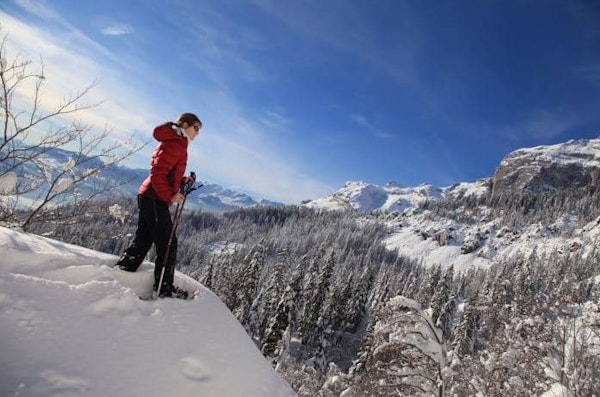
Expedition Snowshoeing requires tough snowshoes for difficult terrain, often in the backcountry and often more dangerous than other types of snowshoeing. The snowshoes for this type of snowshoeing are design to accommodate all types of footwear and to be a durable companion to those looking for a challenging and sustained excursion.
When is the Best Time of Year to Go Snowshoeing?
Snowshoeing needs but a few things, but snow is one of them. Winter time is the best time to go snowshoeing, though some terrain has snow all year round. You can also enjoy it in the spring where snow lingers in certain areas and the climate becomes a bit more comfortable.
The weather can be increasingly volatile in the fall and winter. It is imperative to take current conditions into account – snowshoeing in inclement weather can be dangerous.
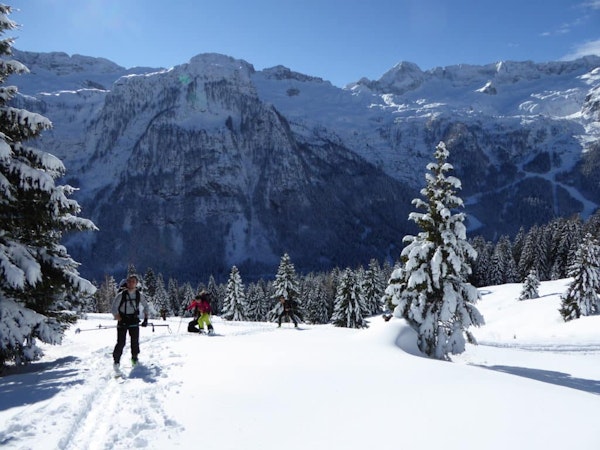
Snowshoeing equipment
The equipment necessary for snowshoeing is relatively basic, though – depending on the severity of the activity – it can include accessories for ascending and descending mountains.
The essential equipment includes:
Snowshoes
Hiking boots (to attach to the snowshoes)
Wool socks
Gloves
Ski goggles
Ski hat
Light Backpack
GPS or other navigational tool(s)
Trekking poles
Food and water
For longer snowshoeing treks, you may need to bring a tent and camping gear. It all depends on the extent of your adventure.

Why Should You Hire A Guide for Snowshoeing?
Hiring a guide for snowshoeing is a safe and satisfying way to explore a new and thrilling terrain. Guides often have a local knowledge that gives you personal insight into a location, enhancing your appreciation of a region and giving you an authentic experience. By accompanying a guide, you can take routes that are more exciting, safer, and overall more fulfilling.
Hiring a guide also allows you to enjoy the experience with someone well-versed in the sport, providing ways to improve in your technique and skill. If you want to get the most out of a snowshoeing trip, it makes sense to seek a guide who can encourage your progress in the sport and get you excited to pursue similar adventures.
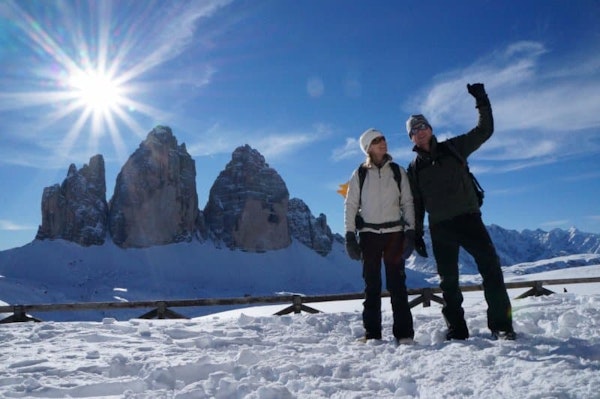
Top 10 Destinations for Snowshoeing in the World
Norway – If you have the Northern Lights on your bucket list, a trip to Norway can kill two birds with one stone. Enjoy some of the best snow in the world while taking advantage of one of Earth’s greatest natural phenomena.
Chamonix-Mont Blanc (France) – Known across the world as “the cradle of mountaineering,” Chamonix and Mont Blanc have something for everyone. With adventures of every level, you are bound to find the perfect snowshoeing program in the Alps made just for you.
Bulgaria – The Rila and Rhodope Mountains are a great place for remote snowshoeing trips, and Bulgaria offers modern amenities that make it a world-class destination.
Japan – The snow in Hokkaido is epic, and each different location in Japan has its own distinct features that are perfect to explore on a set of snowshoes.
Andorra – Snuggled into the Pyrenees, Andorra was made for snowshoeing with sweeping views in every direction of its unique forests and glaciers.
Slovenia – The Julian Alps are some of the most aesthetically pleasing mountains in the world and exploring their nooks and crannies on snowshoes makes for a life-changing adventure.
Valais (Switzerland) – The heart of the Alps is a classic destination for pure snow and compelling terrain. Beginners and experts can spend days exploring the beauty of Valais.
Dolomites (Italy) – From spectacular geology comes spectacular sports. The Dolomites are a unique and historic region and snowshoeing can be a gateway sport to everything the region has to offer.
Austria – Austria has some of the most evocative scenery in the Alps. It was built to accommodate snow sports and activities, so you have an eclectic selection of great options for every type of snowshoeing adventure.
Vosges Mountains (France) – Not to be outdone by the Alps, Les Vosges has great forested routes to discover and fascinating rock formations traverse.
